316L Powder
$0.00
316L Powder
| Product | 316L Powder |
| CAS No. | 12597-68-1 |
| Appearance | Metallic Gray Powder |
| Purity | ≥99%, ≥99.9%, ≥95%(Other purities are also available) |
| APS | 1-5 µM, 10-53 µM (Can be customized), Ask for other available size range. |
| Ingredient | Fe-Cr-Ni-Mo |
| Density | 7.99g/cm3 |
| Molecular Weight | 55.22g/mol |
| Product Codes | NCZ-DCY-349/25 |
316L Description:
316L Powder is one of the numerous advanced ceramic materials manufactured by Nanochemazone. Nanochemazone produces too many standard grades when applicable, including Mil Spec (military grade); ACS, Reagent and Technical Grade; Food, Agricultural and Pharmaceutical Grade; Optical Grade, USP and EP/BP (European Pharmacopoeia/British Pharmacopoeia) and follows applicable ASTM testing standards. Typical and custom packaging is available. Additional technical, research and safety (MSDS) information are available. Please request a quote above for more information on lead time and pricing.
316L Powder Related Information :
Storage Conditions:
Airtight sealed, avoid light and keep dry at room temperature.
Please contact us for customization and price inquiry
Email: [email protected]
Note: We supply different size ranges of Nano and micron as per the client’s requirements and also accept customization in various parameters.
Best Stainless Steel 316L Powder for 3D Printing
Stainless steel 316L powder is a versatile and widely used material in various industries. Its unique properties make it suitable for applications ranging from 3D printing to biomedical implants. In this article, we will explore the characteristics, uses, manufacturing process, and advantages of stainless steel 316L powder.
Overview of Stainless Steel 316L Powder
316L stainless steel belongs to the austenitic class of stainless steels. The addition of 2-3% molybdenum along with nickel and chromium imparts excellent pitting and crevice corrosion resistance in harsh environments. The ‘L’ denotes lower carbon content to avoid carbide precipitation during welding.
Key characteristics of 316L powder include:
Excellent corrosion resistance in harsh environments
High oxidation and sulfidation resistance at elevated temperatures
Very good weldability and formability
Non-magnetic austenitic structure
Available in range of particle size distributions
316L powder is suitable for applications requiring excellent corrosion resistance like chemical processing, pharmaceutical, food and beverage, marine equipment and biomedical implants. This article provides a detailed overview of 316L powder.
Chemical Composition of 316L Powder
| Element | Weight % |
| Iron (Fe) | Balance |
| Chromium (Cr) | 16-18% |
| Nickel (Ni) | 10-14% |
| Molybdenum (Mo) | 2-3% |
| Manganese (Mn) | ≤ 2% |
| Silicon (Si) | ≤ 1% |
| Carbon (C) | ≤ 0.03% |
| Phosphorus (P) | ≤ 0.045% |
| Sulfur (S) | ≤ 0.03% |
| Property | Value |
| Density | 7.9-8.1 g/cm3 |
| Melting Point | 1370-1400°C |
| Thermal Conductivity | 16 W/mK |
| Electrical Resistivity | 0.75 μΩ.cm |
| Young’s Modulus | 190-210 GPa |
| Poisson’s Ratio | 0.27-0.30 |
| Tensile Strength | 485-620 MPa |
| Yield Strength | 170-310 MPa |
| Elongation | 40-50% |
| Hardness | 79-95 HRB |
316L offers excellent corrosion resistance combined with good formability and weldability. The austenitic structure provides good toughness and ductility.
Production Method for 316L Powder
Common production methods for 316L powder include:
Gas Atomization – Inert gas jets disintegrate molten 316L alloy stream into fine spherical powders with controlled size distribution.
Water Atomization – High pressure water jet impacts and disintegrates molten metal to produce fine irregular powder particles.
Mechanical Alloying – Ball milling of blended elemental powders followed by sintering and secondary atomization.
Gas atomization allows excellent control over particle characteristics like size, shape, oxygen pickup and microstructure.
Typical applications of 316L powder include:
Additive Manufacturing – Powder bed fusion, binder jetting processes use 316L powder for chemical, marine, biomedical parts.
Metal Injection Molding – To manufacture small, complex components needing corrosion resistance.
Thermal Spray Coatings – Wire arc spray deposition to produce protective coatings in harsh environments.
Welding Consumables – Used as filler material for joining 316L components providing excellent weld strength.
Chemical Processing – Powder metallurgy vessels, trays, baskets used in chemical and pharmaceutical industries.
Specifications of 316L Powder
316L powder is available under different size ranges, shapes and purity levels:
Particle Size: From 10-45 μm for AM methods, up to 150 μm for thermal spray processes.
Morphology: Spherical, irregular and blended particle shapes. Smooth spherical powder provides optimal flow.
Purity: From commercial to high purity (99.9%) tailored to application requirements.
Oxygen Content: Levels maintained at 100-1000 ppm for most applications.
Flow Rate: Powder customized for flow rates above 25 s/50 g.
Storage and Handling of 316L Powder
316L powder should be handled with care to:
Prevent contact with moisture, acids etc. leading to corrosion
Avoid fine powder accumulation to minimize risk of dust explosions
Use proper ventilation, PPE when handling fine powders
Follow recommended practices from supplier SDS
Store sealed containers in a dry, inert atmosphere
Proper protective measures must be taken when handling reactive alloy powders like 316L.
Inspection and Testing of 316L Powder
Key quality control tests performed on 316L powder:
Chemical analysis using OES or XRF to ensure composition is within specified limits
Particle size distribution as per ASTM B822 standard
Morphology analysis through SEM imaging
Powder flow rate measured as per ASTM B213 standard
Density determination by helium pycnometry
Impurity testing by ICP-MS
Microstructure characterization by X-ray diffraction
Thorough testing ensures the powder meets the required chemical, physical and microstructural characteristics for the intended application.
Comparison Between 316L and 304L Stainless Steel Powders
316L and 304L stainless steel powders compared:
| Parameter | 316L | 304L |
| Composition | Fe-Cr-Ni-Mo | Fe-Cr-Ni |
| Corrosion resistance | Much better | Good |
| Cost | Higher | Lower |
| Temperature resistance | Better | Good |
| Weldability | Excellent | Excellent |
| Availability | Moderate | Excellent |
| Applications | Marine, chemical industry | Consumer products, appliances |
316L offers substantially better corrosion resistance whereas 304L is more economical for less demanding applications.
316L Powder FAQs
Q: How is 316L stainless steel powder produced?
A: 316L powder is commercially produced using gas atomization, water atomization and mechanical alloying followed by sintering. Gas atomization offers the best control of powder characteristics.
Q: What are the main applications of 316L powder?
A: Key applications for 316L powder include additive manufacturing, metal injection molding, thermal spray coatings, and powder metallurgy parts for chemical, marine, pharmaceutical and food industries needing excellent corrosion resistance.
Q: What is the recommended 316L powder size for binder jetting AM?
A: For binder jetting process, the typical 316L powder size range is 20-45 microns with spherical morphology for optimal powder bed density and binder infiltration.
Q: Does 316L powder require special handling precautions?
A: Yes, 316L is a reactive alloy powder and should be handled carefully under controlled humidity and inert atmosphere using proper grounding, ventilation and PPE.
Q: Where can I buy 316L powder suitable for biomedical implants?
A: High purity, gas atomized 316L powder meeting biomedical specifications can be purchased from leading manufacturer.
Category: Iron Based Alloy Powder
Description
Description
Note: For pricing & ordering information, please get in touch with us at [email protected]
Please contact us for quotes on Larger Quantities and customization. E-mail: [email protected]
Customization:
If you are planning to order large quantities for your industrial and academic needs, please note that customization of parameters (such as size, length, purity, functionalities, etc.) is available upon request.
NOTE:
Images, pictures, colors, particle sizes, purity, packing, descriptions, and specifications for the real and actual goods may differ. These are only used on the website for the purposes of reference, advertising, and portrayal. Please contact us via email at [email protected] or by phone at (+1 780 612 4177) if you have any
Reviews (0)
Only logged in customers who have purchased this product may leave a review.
Shipping & Delivery
Related products
18Ni300 Powder
$0.00
18Ni300 Powder
| Product | 18Ni300 Powder |
| CAS No. | 7440-02-0 |
| Appearance | Grey to Dark Grey Powder |
| Purity | ≥99%, ≥99.9%, ≥95%(Other purities are also available) |
| APS | 1-5 µM, 10-53 µM (Can be customized), Ask for other available size range. |
| Ingredient | 18Ni |
| Density | 8.0g/cm3 |
| Molecular Weight | N/A |
| Product Codes | NCZ-DCY-348/25 |
18Ni300 Description:
18Ni300 Powder is one of the numerous advanced ceramic materials manufactured by Nanochemazone. Nanochemazone produces too many standard grades when applicable, including Mil Spec (military grade); ACS, Reagent and Technical Grade; Food, Agricultural and Pharmaceutical Grade; Optical Grade, USP and EP/BP (European Pharmacopoeia/British Pharmacopoeia) and follows applicable ASTM testing standards. Typical and custom packaging is available. Additional technical, research and safety (MSDS) information are available. Please request a quote above for more information on lead time and pricing.18Ni300 Powder Related Information :
Storage Conditions: Airtight sealed, avoid light and keep dry at room temperature. Please contact us for customization and price inquiry Email: [email protected] Note: We supply different size ranges of Nano and micron as per the client’s requirements and also accept customization in various parameters. Properties and Characteristics of 18Ni300 Powder 18Ni300 powder boasts a unique combination of properties that make it a highly sought-after material for 3D printing applications. Here are some of its key characteristics:| Property | Description |
| High Strength and Toughness | Even after 3D printing, 18Ni300 parts exhibit exceptional strength and toughness, making them ideal for demanding applications. Imagine a 3D-printed gear that can withstand incredible pressure without breaking – that’s the power of 18Ni300. |
| Excellent Wear Resistance | This material stands up to wear and tear remarkably well. Think of a 3D-printed mold that retains its shape and function even after countless uses. |
| Low-Carbon Content | The low carbon content minimizes the risk of cracking during the 3D printing process, ensuring smooth and reliable production. |
| Good Weldability | 18Ni300 parts can be readily welded, allowing for the creation of complex structures or the joining of 3D-printed components with traditional manufacturing techniques. |
| High Dimensional Accuracy | The spherical shape and consistent particle size of 18Ni300 powder contribute to excellent dimensional accuracy in the final 3D-printed parts. |
| Industry | Application Examples |
| Aerospace | High-strength components for aircraft landing gear, rocket engine parts, and other critical structures. |
| Oil & Gas | Wear-resistant parts for downhole tools, valves, and other equipment exposed to harsh environments. |
| Automotive | High-performance gears, shafts, and other components for demanding applications. |
| Medical | Biocompatible implants and surgical instruments requiring exceptional strength and durability. |
| Defense | Armor components, weapon parts, and other applications where lightweight yet robust materials are essential. |
| Specification | Description |
| Particle Size | The size of the powder particles significantly impacts the final properties and printability of the 3D-printed part. Finer powders generally offer better surface finish and detail but may require specialized printing equipment. |
| Flowability | The powder’s ability to flow freely is essential for even distribution during the 3D printing process. Good flowability ensures consistent material deposition and minimizes printing defects. |
| Apparent Density | This refers to the weight of powder per unit volume. It’s a crucial factor for determining the amount of material needed for your print and optimizing printing parameters. |
| Grade | Different grades of 18Ni300 powder may offer variations in composition or properties to cater to specific application needs. For instance, some grades might prioritize higher strength, while others focus on improved machinability. |
310 Powder
$0.00
310 Powder
| Product | 310 Powder |
| CAS No. | N/A |
| Appearance | Metallic Gray Powder |
| Purity | ≥99%, ≥99.9%, ≥95%(Other purities are also available) |
| APS | 1-5 µM, 10-53 µM (Can be customized), Ask for other available size range. |
| Ingredient | Fe-25Cr-20Ni |
| Density | 7.7-8.0g/cm3 |
| Molecular Weight | N/A |
| Product Codes | NCZ-DCY-338/25 |
310 Description:
310 Powder is one of the numerous advanced ceramic materials manufactured by Nanochemazone. Nanochemazone produces too many standard grades when applicable, including Mil Spec (military grade); ACS, Reagent and Technical Grade; Food, Agricultural and Pharmaceutical Grade; Optical Grade, USP and EP/BP (European Pharmacopoeia/British Pharmacopoeia) and follows applicable ASTM testing standards. Typical and custom packaging is available. Additional technical, research and safety (MSDS) information are available. Please request a quote above for more information on lead time and pricing.310 Powder Related Information :
Storage Conditions: Airtight sealed, avoid light and keep dry at room temperature. Please contact us for customization and price inquiry Email: [email protected] Note: We supply different size ranges of Nano and micron as per the client’s requirements and also accept customization in various parameters. 310 Powder 310 powder is an austenitic stainless steel powder containing high levels of chromium, nickel and nitrogen for enhanced mechanical properties and corrosion resistance. It offers an excellent combination of strength, hardness, toughness and wear resistance. Overview of 310 Powder 310 powder is an austenitic stainless steel powder containing high levels of chromium, nickel and nitrogen for enhanced mechanical properties and corrosion resistance. It offers an excellent combination of strength, hardness, toughness and wear resistance. Key properties and advantages of 310 powder include: 310 Powder Properties and Characteristics| Properties | Details |
| Composition | Fe-25Cr-20Ni-0.25N alloy |
| Density | 8.1 g/cc |
| Particle shape | Irregular, angular |
| Size range | 10-150 microns |
| Apparent density | Up to 50% of true density |
| Flowability | Moderate |
| Strength | Very high for a 300 series powder |
| Wear resistance | Excellent due to work hardening |
| Element | Weight % |
| Iron (Fe) | Balance |
| Chromium (Cr) | 24-26% |
| Nickel (Ni) | 19-22% |
| Nitrogen (N) | 0.2-0.4% |
| Carbon (C) | 0.25% max |
| Silicon (Si) | 1.5% max |
| Manganese (Mn) | 2% max |
| Sulfur (S) | 0.03% max |
| Phosphorus (P) | 0.045% max |
| Property | Values |
| Density | 8.1 g/cc |
| Melting point | 1370-1400°C |
| Electrical resistivity | 0.8 μΩ-m |
| Thermal conductivity | 12 W/mK |
| Thermal expansion | 11 x 10^-6 /K |
| Maximum service temperature | 1150°C |
| Property | Values |
| Tensile strength | 760-900 MPa |
| Yield strength | 450-550 MPa |
| Elongation | 35-40% |
| Hardness | 32-38 HRC |
| Impact strength | 50-100 J |
| Modulus of elasticity | 190-210 GPa |
| Industry | Example Uses |
| Petrochemical | Valves, pumps, shafts |
| Food processing | Extruder screws, blades |
| Automotive | Gears, shafts, fasteners |
| Manufacturing | Press tooling, bearing cages |
| Medical | Surgical instruments, implants |
| Standard | Description |
| ASTM A276 | Standard specification for stainless steel bars and shapes |
| ASTM A314 | Standard for stainless steel bent pipe and tubing |
| ASME SA-479 | Specification for stainless steel tubing |
| AMS 5517 | Annealed corrosion resistant steel bar, wire, forgings |
| AMS 5903 | Precipitation hardening stainless steel bar, wire, forgings |
| Particle Size | Characteristics |
| 10-45 microns | Ultrafine grade for high density and surface finish |
| 45-150 microns | Coarse grade provides good flowability |
| 15-150 microns | Standard grade for pressing and sintering |
| Apparent Density | Details |
| Up to 50% of true density | For irregular powder morphology |
| 4.5-5.5 g/cc typical | Improves with greater packing density |
| Method | Details |
| Gas atomization | High pressure inert gas breaks molten metal stream into fine droplets |
| Water atomization | High pressure water jet breaks metal into fine particles |
| Vacuum induction melting | High purity input materials melted under vacuum |
| Multiple remelting | Improves chemical homogenization |
| Sieving | Classifies powder into different particle size ranges |
| Recommendation | Reason |
| Use PPE and ventilation | Avoid exposure to fine metallic particles |
| Ensure proper grounding | Prevent static discharge while handling |
| Avoid ignition sources | Powder can combust in oxygen atmosphere |
| Use non-sparking tools | Prevent possibility of ignition |
| Follow safety protocols | Reduce risk of burns, inhalation, ingestion |
| Store in stable containers | Prevent contamination or oxidation |
| Test | Details |
| Chemical analysis | ICP and XRF verify composition |
| Particle size distribution | Laser diffraction determines size distribution |
| Apparent density | Hall flowmeter test per ASTM B212 standard |
| Powder morphology | SEM imaging shows particle shape |
| Flow rate analysis | Gravity flow rate through specified nozzle |
| Loss on ignition | Determines residual moisture content |
| Parameter | 310 | 316L |
| Density | 8.1 g/cc | 8.0 g/cc |
| Strength | 760-900 MPa | 485-550 MPa |
| Hardness | 32-38 HRC | 79-95 HRB |
| Corrosion resistance | Very good | Excellent |
| Cost | Low | High |
| Uses | Wear parts, tools | Chemical plants, marine |
317L Powder
$0.00
317L Powder
| Product | 317L Powder |
| CAS No. | 12597-68-1 |
| Appearance | Metallic Gray Powder |
| Purity | ≥99%, ≥99.9%, ≥95%(Other purities are also available) |
| APS | 1-5 µM, 10-53 µM (Can be customized), Ask for other available size range. |
| Ingredient | Fe-18Cr-12Ni-3Mo |
| Density | 7.9g/cm3 |
| Molecular Weight | N/A |
| Product Codes | NCZ-DCY-341/25 |
317L Description:
317L Powder is one of the numerous advanced ceramic materials manufactured by Nanochemazone. Nanochemazone produces too many standard grades when applicable, including Mil Spec (military grade); ACS, Reagent and Technical Grade; Food, Agricultural and Pharmaceutical Grade; Optical Grade, USP and EP/BP (European Pharmacopoeia/British Pharmacopoeia) and follows applicable ASTM testing standards. Typical and custom packaging is available. Additional technical, research and safety (MSDS) information are available. Please request a quote above for more information on lead time and pricing.317L Powder Related Information:
Storage Conditions: Airtight sealed, avoid light and keep dry at room temperature. Please contact us for customization and price inquiry Email: [email protected] Note: We supply different size ranges of Nano and micron as per the client’s requirements and also accept customization in various parameters. 317L Powder 317L powder is an austenitic stainless steel powder containing 18% chromium, 3% molybdenum, and 0.08% carbon. It offers an excellent combination of corrosion resistance, strength, weldability and cost. Overview of 317L Powder 317L powder is an austenitic stainless steel powder containing 18% chromium, 3% molybdenum, and 0.08% carbon. It offers an excellent combination of corrosion resistance, strength, weldability and cost. Key properties and advantages of 317L powder include:| Properties | Details |
| Composition | Fe-18Cr-3Mo-0.08C alloy |
| Density | 8.0 g/cc |
| Particle shape | Irregular, angular |
| Size range | 10-150 microns |
| Apparent density | Up to 50% of true density |
| Flowability | Moderate |
| Corrosion resistance | Excellent in many environments |
| Strengthening | Cold working and solid solution strengthening |
| Element | Weight % |
| Iron (Fe) | Balance |
| Chromium (Cr) | 17-19% |
| Nickel (Ni) | 11-15% |
| Molybdenum (Mo) | 2.5-3.5% |
| Manganese (Mn) | <2% |
| Carbon (C) | 0.08% max |
| Silicon (Si) | 1% max |
| Nitrogen (N) | 0.10% max |
| Sulfur (S) | 0.03% max |
| Property | Values |
| Density | 8.0 g/cc |
| Melting point | 1370-1400°C |
| Electrical resistivity | 0.8 μΩ-m |
| Thermal conductivity | 16 W/mK |
| Thermal expansion | 16 x 10^-6 /K |
| Maximum service temperature | 900°C |
| Property | Values |
| Tensile strength | 515-620 MPa |
| Yield strength | 205-275 MPa |
| Elongation | 40-50% |
| Hardness | 88-95 HRB |
| Impact strength | 100-150 J |
| Modulus of elasticity | 190-210 GPa |
| Industry | Example Uses |
| Chemical | Tanks, valves, pipes, pumps |
| Petrochemical | Process equipment, tubing, valves |
| Marine | Propeller shafts, fasteners, deck hardware |
| Nuclear | Reactor vessels, fuel element cladding |
| Architectural | Railings, wall panels, roofing |
| Standard | Description |
| ASTM A276 | Standard for stainless steel bars and shapes |
| ASTM A479 | Standard for stainless steel tubing |
| AMS 5524 | Annealed stainless steel bar, wire, forgings |
| ASME SA-276 | Specification for stainless steel bars and shapes |
| AISI 630 | Standard for 17Cr-4Ni precipitation hardening stainless steel |
| Particle Size | Characteristics |
| 10-45 microns | Ultrafine grade for high density and surface finish |
| 45-150 microns | Coarse grade provides good flowability |
| 15-150 microns | Standard grade for pressing and sintering |
| Apparent Density | Details |
| Up to 50% of true density | For irregular powder morphology |
| 4.5-5.5 g/cc typical | Improves with greater packing density |
| Method | Details |
| Gas atomization | High pressure inert gas breaks molten metal stream into fine droplets |
| Water atomization | High pressure water jet breaks metal into fine particles |
| Vacuum induction melting | High purity input materials melted under vacuum |
| Multiple remelting | Improves chemical homogenization |
| Sieving | Classifies powder into different particle size ranges |
| Recommendation | Reason |
| Use PPE and ventilation | Avoid exposure to fine metallic particles |
| Ensure proper grounding | Prevent static discharge while handling |
| Avoid ignition sources | Powder can combust in oxygen atmosphere |
| Use non-sparking tools | Prevent possibility of ignition |
| Follow safety protocols | Reduce risk of burns, inhalation, ingestion |
| Store in stable containers | Prevent contamination or oxidation |
| Test | Details |
| Chemical analysis | ICP and XRF verify composition |
| Particle size distribution | Laser diffraction determines size distribution |
| Apparent density | Hall flowmeter test per ASTM B212 standard |
| Powder morphology | SEM imaging shows particle shape |
| Flow rate analysis | Gravity flow rate through specified nozzle |
| Loss on ignition | Determines residual moisture content |
| Parameter | 317L | 316L |
| Density | 8.0 g/cc | 8.0 g/cc |
| Strength | 515-620 MPa | 485-550 MPa |
| Corrosion resistance | Excellent | Outstanding |
| Pitting resistance | Very good | Excellent |
| Cost | Low | High |
| Uses | Process industry, marine | Chemical, pharmaceutical |
H13 Alloy Steel Powder
$0.00
H13 Alloy Steel Powder
| Product | H13 Alloy Steel Powder |
| CAS No. | N/A |
| Appearance | Gray to Dark Gray Powder |
| Purity | ≥99%, ≥99.9%, ≥95%(Other purities are also available) |
| APS | 1-5 µM, 10-53 µM (Can be customized), Ask for other available size range. |
| Ingredient | Fe-Cr-Mo-V-C |
| Density | 7.80g/cm3 |
| Molecular Weight | N/A |
| Product Codes | NCZ-DCY-351/25 |
H13 Alloy Steel Description:
H13 Alloy Steel Powder is one of the numerous advanced ceramic materials manufactured by Nanochemazone. Nanochemazone produces too many standard grades when applicable, including Mil Spec (military grade); ACS, Reagent and Technical Grade; Food, Agricultural and Pharmaceutical Grade; Optical Grade, USP and EP/BP (European Pharmacopoeia/British Pharmacopoeia) and follows applicable ASTM testing standards. Typical and custom packaging is available. Additional technical, research and safety (MSDS) information are available. Please request a quote above for more information on lead time and pricing.H13 Alloy Steel Powder Related Information :
Storage Conditions: Airtight sealed, avoid light and keep dry at room temperature. Please contact us for customization and price inquiry Email: [email protected] Note: We supply different size ranges of Nano and micron as per the client’s requirements and also accept customization in various parameters. H13 Alloy Steel Powder For 3D Printing Our nitrogen atomized H13 alloy steel powder has good hardenability, thermal strength, wear resistance and high impact toughness, thermal fatigue, widely used in the manufacture of hot work molds.Wear is one of the main failure modes of H13 steel hot-working die. Improving the surface wear resistance of H13 steel is an effective way to improve the life of die. H13 alloy steel powder is a highly versatile and widely used material in various industrial applications, particularly in the field of metal additive manufacturing (AM). This chromium-molybdenum hot-work tool steel is renowned for its exceptional properties, such as high hardness, excellent wear resistance, and good toughness, even at elevated temperatures.| Composition | Content (%) |
| Carbon | 0.32 – 0.45 |
| Chromium | 4.75 – 5.50 |
| Molybdenum | 1.10 – 1.75 |
| Vanadium | 0.80 – 1.20 |
| Silicon | 0.80 – 1.20 |
| Manganese | 0.20 – 0.50 |
| Iron | Balance |
| Property | Value |
| Density | 7.8 g/cm³ |
| Hardness (Annealed) | 185 – 235 HB |
| Hardness (Heat Treated) | 48 – 52 HRC |
| Tensile Strength (Heat Treated) | 1800 – 2100 MPa |
| Yield Strength (Heat Treated) | 1500 – 1800 MPa |
| Elongation (Heat Treated) | 10 – 15% |
| Thermal Conductivity | 28.6 W/m·K at 20°C |
| Melting Point | 1427 – 1510°C |
| Application | Description |
| Extrusion Dies | Used for hot extrusion of metals, plastics, and other materials |
| Forging Dies | Utilized in hot forging processes for various metal components |
| Injection Molds | Employed in plastic injection molding for manufacturing plastic parts |
| Hot Shear Blades | Used in hot shearing operations for cutting metals at elevated temperatures |
| Casting Tooling | Utilized in the production of castings for various industries |
| Powder Metallurgy Tooling | Employed in the manufacturing of powder metallurgy components |
| Additive Manufacturing (AM) Components | Used for producing high-performance components via metal 3D printing techniques |
| Specification | Description |
| ASTM A681 | Standard specification for tool steels alloy |
| DIN 1.2344 | German standard for hot-work tool steel |
| JIS SKD61 | Japanese Industrial Standard for hot-work die steel |
| BS BH13 | British Standard for hot-working die steel |
| AISI H13 | American Iron and Steel Institute specification for hot-work die steel |
H13 Powder
$0.00
H13 Powder
| Product | H13 Powder |
| CAS No. | 7439-89-6 |
| Appearance | Gray Metallic Powder |
| Purity | ≥99%, ≥99.9%, ≥95%(Other purities are also available) |
| APS | 1-5 µM, 10-53 µM (Can be customized), Ask for other available size range. |
| Ingredient | Fe-Cr-Mo-V |
| Density | 7.80g/cm3 |
| Molecular Weight | N/A |
| Product Codes | NCZ-DCY-344/25 |
H13 Description:
H13 Powder is one of the numerous advanced ceramic materials manufactured by Nanochemazone. Nanochemazone produces too many standard grades when applicable, including Mil Spec (military grade); ACS, Reagent and Technical Grade; Food, Agricultural and Pharmaceutical Grade; Optical Grade, USP and EP/BP (European Pharmacopoeia/British Pharmacopoeia) and follows applicable ASTM testing standards. Typical and custom packaging is available. Additional technical, research and safety (MSDS) information are available. Please request a quote above for more information on lead time and pricing.H13 Powder Related Information :
Storage Conditions: Airtight sealed, avoid light and keep dry at room temperature. Please contact us for customization and price inquiry Email: [email protected] Note: We supply different size ranges of Nano and micron as per the client’s requirements and also accept customization in various parameters. A Comprehensive Guide to H13 Powder H13 powder is a high-performance tool steel powder that exhibits exceptional strength, toughness, and heat resistance. It belongs to the family of chromium hot-work tool steels, characterized by their ability to withstand high temperatures and mechanical stresses. The powder form of H13 allows for precise and efficient manufacturing processes, making it a popular choice in various industries. Overview of H13 Powder H13 is a versatile chromium-molybdenum-vanadium hot work tool steel exhibiting very good resistance to thermal fatigue cracking and wear resistance. It has high hardness retention at elevated temperatures making it suitable for tools and dies used for hot forming, forging and casting applications. Key characteristics of H13 powder include: Excellent hot hardness and thermal fatigue resistance Good wear resistance and toughness High hardenability for increasing hardness through heat treatment Excellent machinability in annealed state Can be polished to fine surface finish Available in various size ranges and morphologies H13 powder is used to produce hot work tooling needed across several industries including automotive, aerospace, mining, die-casting etc. This article provides a detailed overview of H13 powder. Chemical Composition of H13 Powder The typical chemical composition of H13 powder is:| Element | Weight % |
| Iron (Fe) | Balance |
| Chromium (Cr) | 4.75-5.5% |
| Molybdenum (Mo) | 1.1-1.75% |
| Vanadium (V) | 0.8-1.2% |
| Manganese (Mn) | 0.2-0.6% |
| Silicon (Si) | 0.8-1.2% |
| Carbon (C) | 0.32-0.45% |
| Property | Value |
| Density | 7.3 g/cm3 |
| Melting Point | 1420-1460°C |
| Thermal Conductivity | 24 W/mK |
| Electrical Resistivity | 0.55 μΩ.cm |
| Young’s Modulus | 200 GPa |
| Poisson’s Ratio | 0.29-0.30 |
| Tensile Strength | 1900 MPa |
| Yield Strength | 1650 MPa |
| Elongation | 8-9% |
| Hardness | 46-52 HRC |
| Parameter | H13 | D2 |
| Type | Hot work steel | Cold work steel |
| Cr content | 4.75-5.5% | 11-13% |
| V content | 0.8-1.2% | 0.7-1.2% |
| Heat resistance | Excellent | Good |
| Wear resistance | Very good | Excellent |
| Toughness | Higher | Lower |
| Cost | Lower | Higher |
M2 Powder
$0.00
M2 Powder
| Product | M2 Powder |
| CAS No. | N/A |
| Appearance | Gray Powder |
| Purity | ≥99%, ≥99.9%, ≥95%(Other purities are also available) |
| APS | 1-5 µM, 10-53 µM (Can be customized), Ask for other available size range. |
| Ingredient | Fe-C-Cr-Mo-W-V |
| Density | N/A |
| Molecular Weight | N/A |
| Product Codes | NCZ-DCY-254/25 |
M2 Description:
M2 Powder is one of the numerous advanced ceramic materials manufactured by Nanochemazone. Nanochemazone produces too many standard grades when applicable, including Mil Spec (military grade); ACS, Reagent and Technical Grade; Food, Agricultural and Pharmaceutical Grade; Optical Grade, USP and EP/BP (European Pharmacopoeia/British Pharmacopoeia) and follows applicable ASTM testing standards. Typical and custom packaging is available. Additional technical, research and safety (MSDS) information are available. Please request a quote above for more information on lead time and pricingM2 Powder Related Information :
Storage Conditions: Airtight sealed, avoid light and keep dry at room temperature. Please contact us for customization and price inquiry Email: [email protected] Note: We supply different size ranges of Nano and micron as per the client’s requirements and also accept customization in various parameters. M2 Powder M2 is a high-speed steel powder characterized by its high hardness and wear resistance along with good toughness and compressive strength. It is widely used in metal additive manufacturing to produce durable tooling for cutting, forming and stamping applications. M2 is a high-speed steel powder characterized by its high hardness and wear resistance along with good toughness and compressive strength. It is widely used in metal additive manufacturing to produce durable tooling for cutting, forming and stamping applications. Composition of M2 Powder| Element | Weight % | Purpose |
| Tungsten | 6.0 – 6.8 | Hardness, wear resistance |
| Molybdenum | 4.8 – 5.5 | Toughness, strength |
| Chromium | 3.8 – 4.5 | Hardening, wear resistance |
| Vanadium | 1.9 – 2.2 | Hardening, wear resistance |
| Carbon | 0.78 – 0.88 | Hardening |
| Manganese | 0.15 – 0.45 | Hardening |
| Silicon | 0.15 – 0.45 | Deoxidizer |
| Property | Description |
| Hardness | 64 – 66 HRC when heat treated |
| Wear resistance | Excellent abrasion and erosion resistance |
| Toughness | Higher than tungsten carbide grades |
| Compressive strength | Up to 300 ksi |
| Heat resistance | Can be used up to 600°C |
| Corrosion resistance | Better than plain carbon steels |
| Parameter | Typical value | Purpose |
| Layer height | 20-50 μm | Resolution versus build speed |
| Laser power | 250-500 W | Sufficient melting without evaporation |
| Scan speed | 400-1200 mm/s | Density versus production rate |
| Hatch spacing | 80-120 μm | Mechanical properties |
| Support structure | Minimal | Easy removal |
| Hot isostatic pressing | 1160°C, 100 MPa, 3 hrs | Eliminate porosity |
| Industry | Tooling applications |
| Automotive | Stamping dies, forming tools, fixtures |
| Aerospace | Jigs, fixtures, trim tools |
| Appliances | Punches, blanking dies, bending dies |
| Consumer goods | Injection molds, stamping dies |
| Medical | Cutting tools, rasps, drill guides |
| Parameter | Specification |
| Particle size range | 15-45 μm typical |
| Particle shape | Spherical morphology |
| Apparent density | > 4 g/cc |
| Tap density | > 6 g/cc |
| Hall flow rate | > 23 sec for 50 g |
| Purity | >99.9% |
| Oxygen content | <300 ppm |
| Method | Parameters Tested |
| Sieve analysis | Particle size distribution |
| SEM imaging | Particle morphology |
| EDX | Chemistry and composition |
| XRD | Phases present |
| Pycnometry | Density |
| Hall flow rate | Powder flowability |
| Alloy | Wear Resistance | Toughness | Cost | Ease of Processing |
| M2 | Excellent | Good | Medium | Fair |
| H13 | Good | Excellent | Low | Excellent |
| S7 | Excellent | Fair | High | Difficult |
| 420 stainless | Poor | Excellent | Low | Excellent |
| Pros | Cons |
| Excellent hardness and wear resistance | Lower toughness than cold work tool steels |
| Good heat resistance and thermal stability | Required post-processing like HIP and heat treatment |
| Established credentials for metal AM | Controlled atmosphere storage required |
| Cost advantage over exotic tool steels | Difficult to machine after printing |
| Properties match conventional M2 | Limited corrosion resistance |
OP431 Powder
$0.00
OP431 Powder
| Product | OP431 Powder |
| CAS No. | 431-03-8 |
| Appearance | Light Gray Powder |
| Purity | ≥99%, ≥99.9%, ≥95%(Other purities are also available) |
| APS | 1-5 µM, 10-53 µM (Can be customized), Ask for other available size range. |
| Ingredient | Fe-W-Mo-Cr-V-Co |
| Density | 7.8-8.1g/cm3 |
| Molecular Weight | N/A |
| Product Codes | NCZ-DCY-357/25 |
OP431 Description:
OP431 Powder is one of the numerous advanced ceramic materials manufactured by Nanochemazone. Nanochemazone produces too many standard grades when applicable, including Mil Spec (military grade); ACS, Reagent and Technical Grade; Food, Agricultural and Pharmaceutical Grade; Optical Grade, USP and EP/BP (European Pharmacopoeia/British Pharmacopoeia) and follows applicable ASTM testing standards. Typical and custom packaging is available. Additional technical, research and safety (MSDS) information are available. Please request a quote above for more information on lead time and pricing.OP431 Powder Related Information :
Storage Conditions: Airtight sealed, avoid light and keep dry at room temperature. Please contact us for customization and price inquiry Email: [email protected] Note: We supply different size ranges of Nano and micron as per the client’s requirements and also accept customization in various parameters. Stainless Steel OP431 Powder Stainless steel OP431 powder is a powdered form of stainless steel that consists of iron, chromium, nickel, and other alloying elements. It is manufactured through a specialized process called atomization, where molten stainless steel is rapidly cooled using gas or water, resulting in the formation of fine metal particles. Overview of Stainless Steel OP431 Powder OP431 stainless steel belongs to the ferritic grade steels which contain chromium as the principal alloying element. The addition of aluminum enhances oxidation and corrosion resistance at high temperatures. Key characteristics of OP431 powder include: Excellent oxidation and corrosion resistance up to 1150°C Good creep resistance and thermal fatigue strength Excellent thermo-mechanical stability High thermal conductivity and low thermal expansion Cost-effective compared to austenitic stainless steels Available in various particle size distributions OP431 powder is ideal for applications requiring oxidation resistance, thermal stability and moderate strength at elevated temperatures. Chemical Composition of OP431 Powder OP431 powder has the following nominal composition:| Element | Weight % |
| Iron (Fe) | Balance |
| Chromium (Cr) | 16-18% |
| Aluminum (Al) | 3-5% |
| Yttrium (Y) | 0.2-0.5% |
| Carbon (C) | 0.03% max |
| Silicon (Si) | 1% max |
| Manganese (Mn) | 1% max |
| Property | Value |
| Density | 7.3 g/cm3 |
| Melting Point | 1400-1450°C |
| Thermal Conductivity | 29 W/mK |
| Electrical Resistivity | 0.6 μΩ.cm |
| Young’s Modulus | 200 GPa |
| Poisson’s Ratio | 0.27-0.30 |
| Tensile Strength | 450-650 MPa |
| Yield Strength | 280-480 MPa |
| Elongation | 15-20% |
| Oxidation Resistance | Excellent up to 1150°C |
| Parameter | OP431 | 316L |
| Type | Ferritic | Austenitic |
| Cr content | 16-18% | 16-18% |
| Ni content | – | 10-14% |
| High temperature strength | Higher | Lower |
| Corrosion resistance | Moderate | Excellent |
| Cost | Lower | Higher |
| Applications | Thermal spray, igniters | Automotive, construction |
| Weldability | Poor | Excellent |
T15 Powder
$0.00
T15 Powder
| Product | T15 Powder |
| CAS No. | 14807-96-6 |
| Appearance | Grayish or Metallic Powder |
| Purity | ≥99%, ≥99.9%, ≥95%(Other purities are also available) |
| APS | 1-5 µM, 10-53 µM (Can be customized), Ask for other available size range. |
| Ingredient | WC-Co |
| Density | 8.0-8.2g/cm3 |
| Molecular Weight | N/A |
| Product Codes | NCZ-DCY-358/25 |
T15 Description:
T15 Powder is one of the numerous advanced ceramic materials manufactured by Nanochemazone. Nanochemazone produces too many standard grades when applicable, including Mil Spec (military grade); ACS, Reagent and Technical Grade; Food, Agricultural and Pharmaceutical Grade; Optical Grade, USP and EP/BP (European Pharmacopoeia/British Pharmacopoeia) and follows applicable ASTM testing standards. Typical and custom packaging is available. Additional technical, research and safety (MSDS) information are available. Please request a quote above for more information on lead time and pricing.T15 Powder Related Information :
Storage Conditions: Airtight sealed, avoid light and keep dry at room temperature. Please contact us for customization and price inquiry Email: [email protected] Note: We supply different size ranges of Nano and micron as per the client’s requirements and also accept customization in various parameters. T15 Powder T15 powder is a tungsten carbide-cobalt cemented carbide powder that provides an exceptional combination of hardness, strength, and toughness. It contains a high percentage of tungsten carbide along with 15% cobalt as the binder phase. Overview of T15 Powder T15 powder is a tungsten carbide-cobalt cemented carbide powder that provides an exceptional combination of hardness, strength, and toughness. It contains a high percentage of tungsten carbide along with 15% cobalt as the binder phase. Key properties and advantages of T15 powder: T15 Powder Properties and Characteristics| Properties | Details |
| Composition | 85% WC with 15% Co binder |
| Density | 13.0-14.5 g/cc |
| Particle shape | Rounded, multi-faceted |
| Size range | 0.5-15 microns |
| Hardness | 88-93 HRA when sintered |
| Transverse rupture strength | 550-650 MPa |
| Component | Weight % |
| Tungsten carbide (WC) | 84-86% |
| Cobalt (Co) | 14-16% |
| Carbon (C) | 0.8% max |
| Oxygen (O) | 0.5% max |
| Iron (Fe) | 0.3% max |
| Nickel (Ni) | 0.3% max |
| Property | Values |
| Density | 13.0-14.5 g/cc |
| Melting point | 2870°C (WC) and 1495°C (Co) |
| Thermal conductivity | 60-100 W/mK |
| Electrical resistivity | 25-35 μΩ-cm |
| Coefficient of thermal expansion | 4.5-6.0 x 10^-6 /K |
| Maximum service temperature | 500°C in air |
| Property | Values |
| Hardness | 88-93 HRA |
| Transverse rupture strength | 550-650 MPa |
| Compressive strength | 5500-6200 MPa |
| Fracture toughness | 10-12 MPa.m^1/2 |
| Young’s modulus | 550-650 GPa |
| Impact strength | 350-900 kJ/m2 |
| Industry | Example Uses |
| Mining | Rock drill bits, grit blasting nozzles |
| Construction | Demolition tools, rock crushers |
| Manufacturing | Forming dies, metal drawing parts |
| Oil and gas | Stabilizers, downhole motors |
| General | Cutting and machining tools |
| Standard | Description |
| ISO 513 | Classification and application of cemented carbides |
| ASTM B276 | Cobalt-tungsten carbide powders and hard metals |
| JIS G 4053 | Sintered hard metals |
| GB/T 4661-2006 | Chinese standard for cemented carbides |
| Particle Size | Characteristics |
| 0.5-2 microns | Ultrafine grade provides superfinish |
| 0.5-5 microns | Submicron range enhances toughness |
| 3-15 microns | Most commonly used size for optimal properties |
| Method | Details |
| Carburization and reduction-diffusion | Produces fine spherical powders |
| Crushing sintered material | Lower cost, irregular angular particles |
| Milling | Ball milling used for particle size reduction |
| Spray drying | Granulation and spheroidization process |
| Degassing | Removes gaseous impurities |
| Recommendation | Reason |
| Use PPE and ventilation | Prevent exposure to fine particles |
| Avoid ignition sources | Powder can combust if overheated in air |
| Follow safe protocols | Reduce health and fire hazards |
| Use inert atmosphere | Prevent oxidation during powder processing |
| Store sealed containers | Prevent contamination or absorption |
| Test | Details |
| Chemical analysis | Verifies composition using ICP, EDX, or XRF |
| Particle size distribution | Laser diffraction or sedimentation analysis |
| Powder morphology | SEM imaging of particle shape |
| Apparent density | Measured as per ASTM B212 standard |
| Tap density | Density measured after mechanical tapping |
| Hall flow rate | Determines powder flowability |
| Parameter | T15 | WC-TiC-TaC |
| Hardness | 88-93 HRA | 92-96 HRA |
| Fracture toughness | 10-12 MPa.m^1/2 | 8-9 MPa.m^1/2 |
| Strength | Very high | Extremely high |
| Cost | Moderate | Very high |
| Corrosion resistance | Fair | Excellent |
| Applications | General wear parts | Extreme abrasion and corrosion |

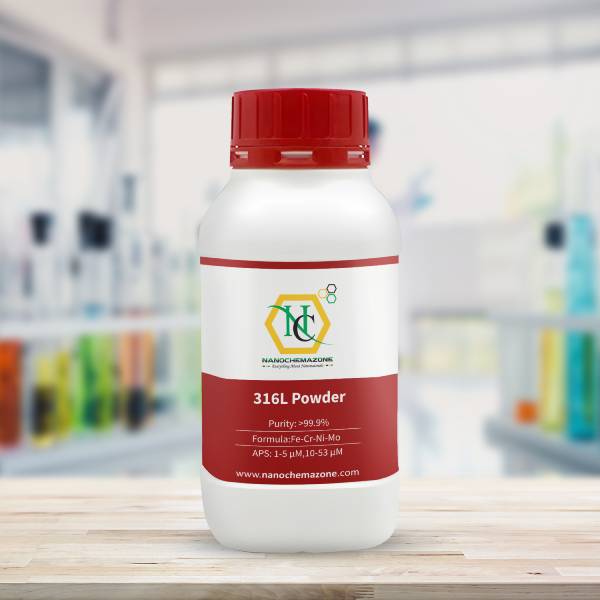
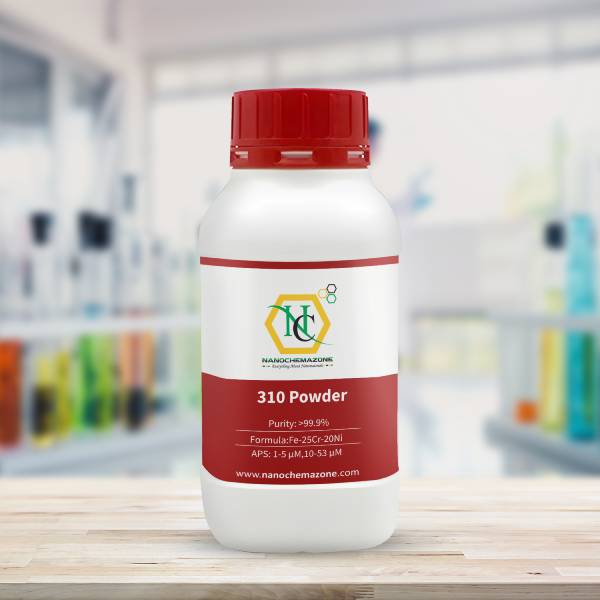
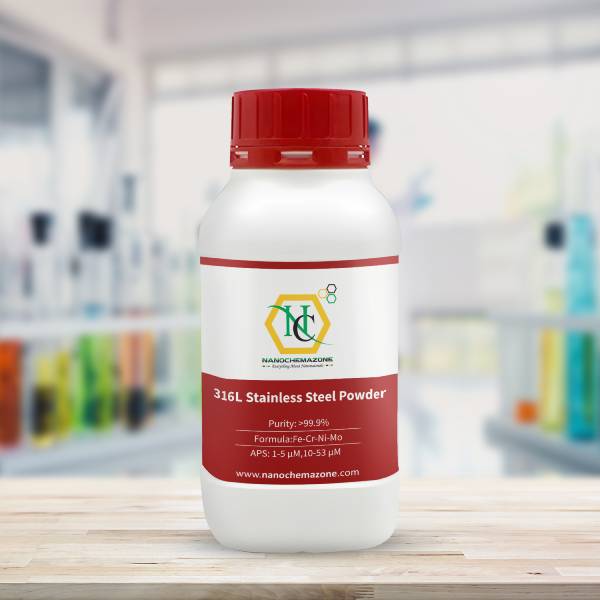
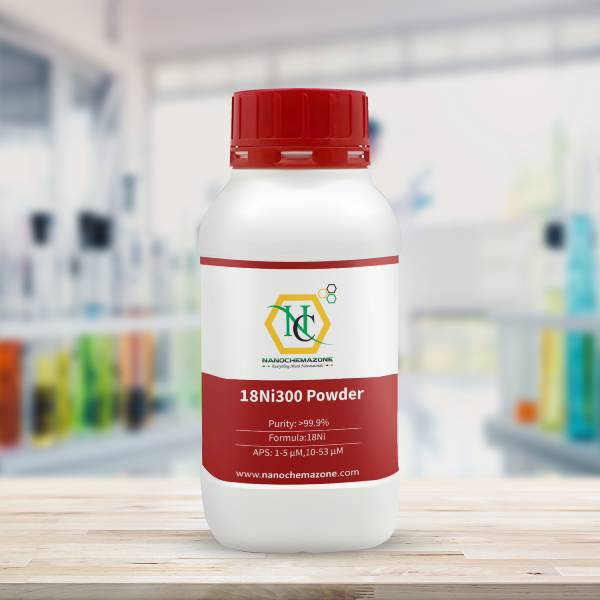
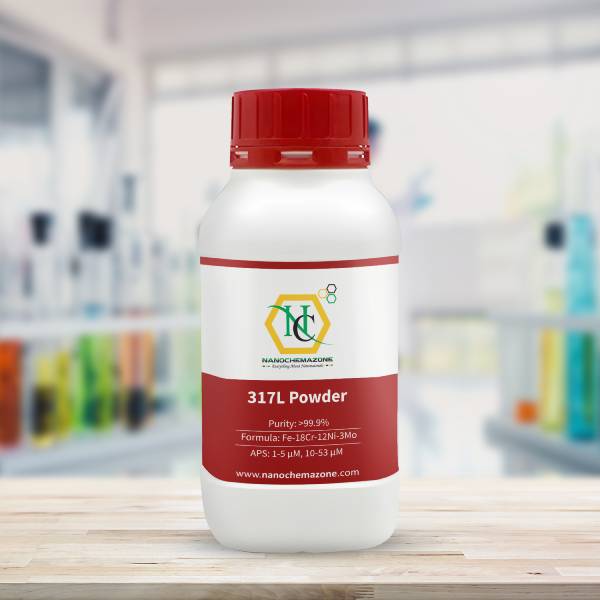
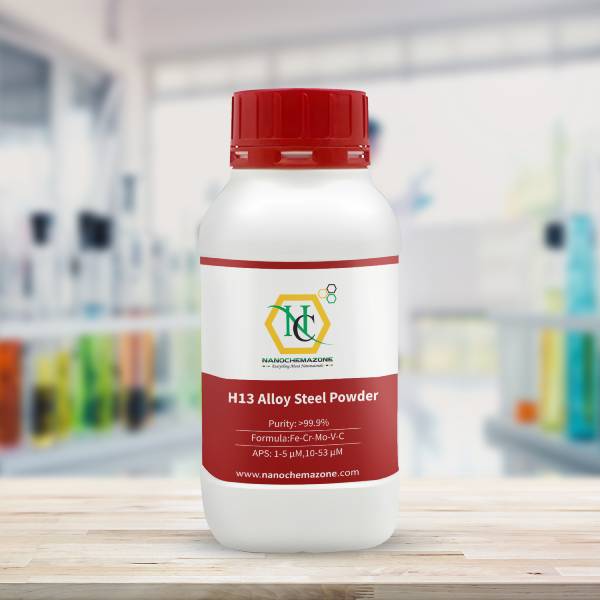
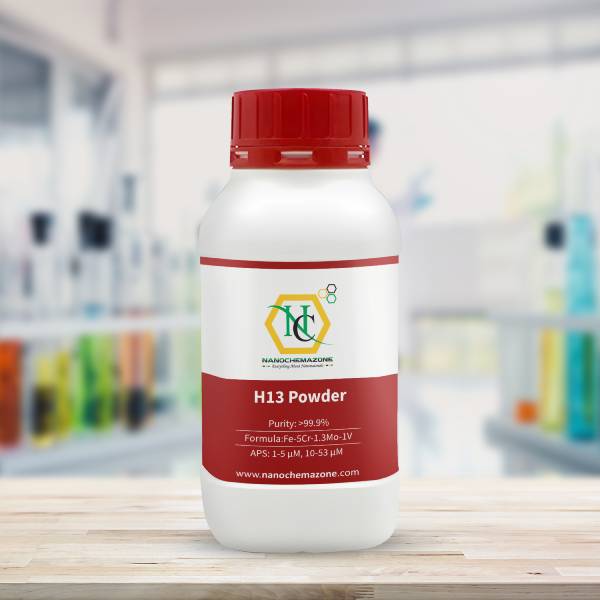
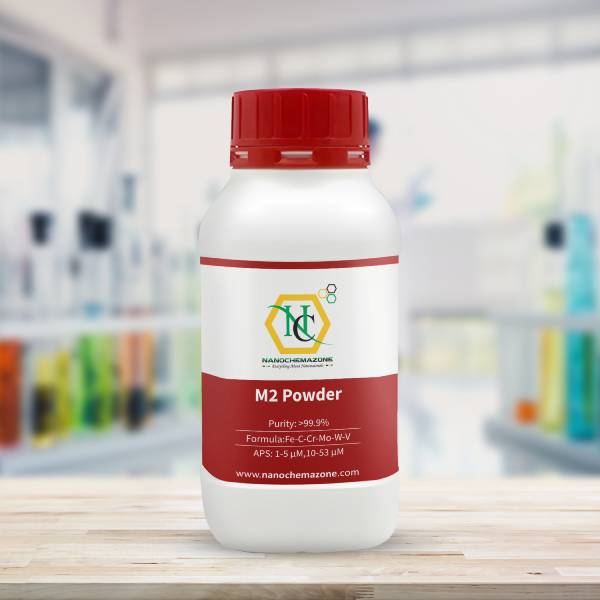
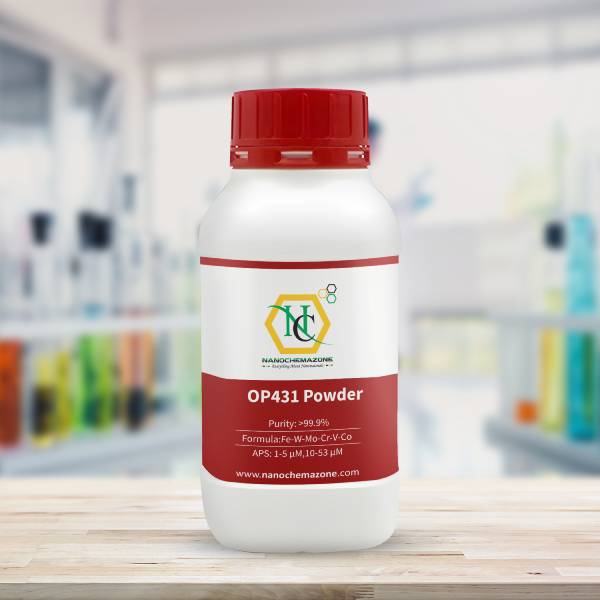
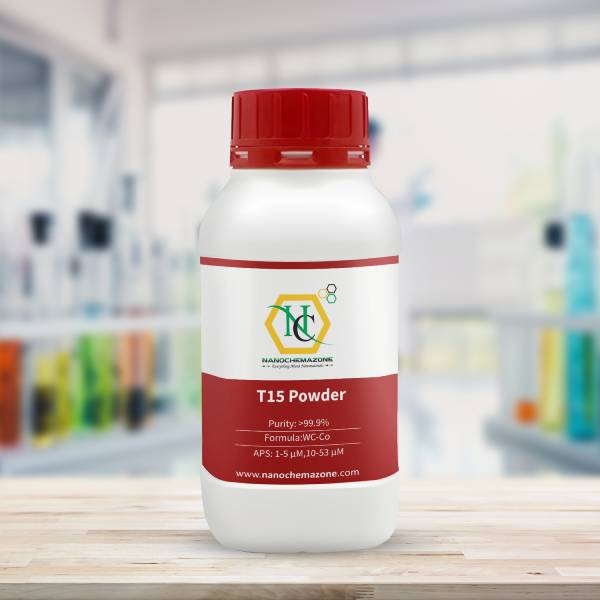
Reviews
There are no reviews yet.